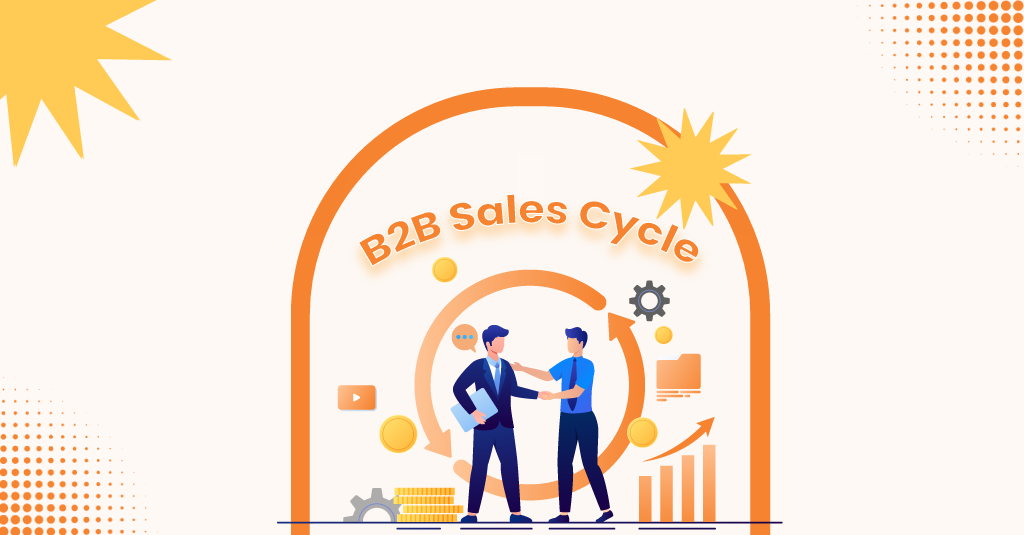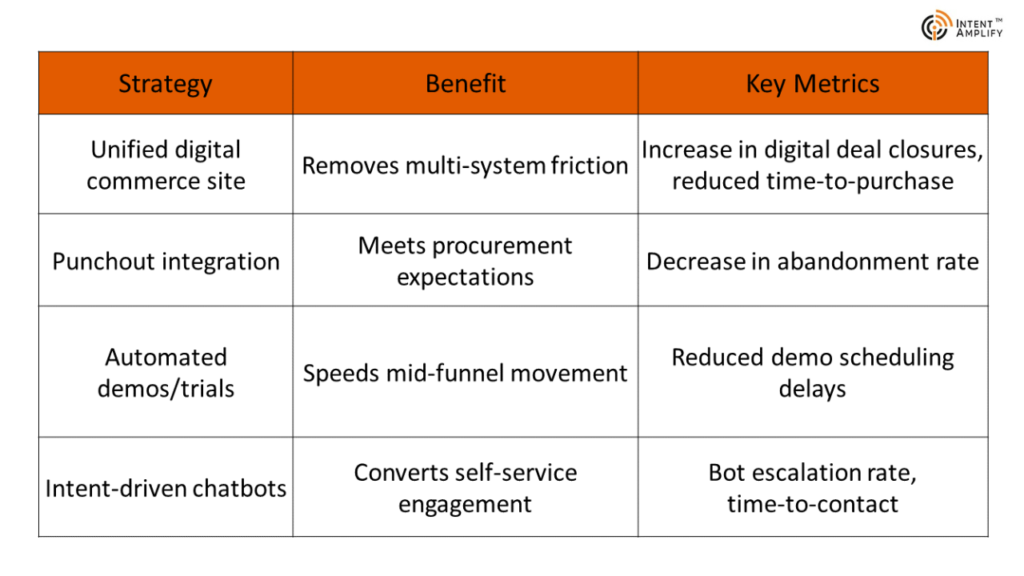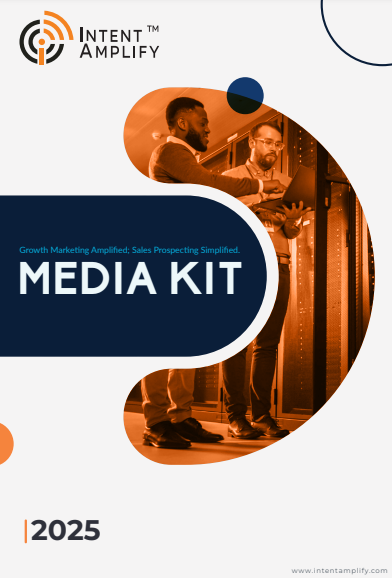
How to Increase Sales Velocity Across the B2B Sales Cycle
- Last updated on: July 22, 2025
Sales velocity is measured by how quickly the sales and marketing teams convert opportunities into revenue.
In B2B, where deals are slow and involve more than one person, that speed is more important than ever.
A sluggish sales cycle doesn’t only harm your numbers. It wastes time, wears out your team’s energy, and in many cases, provides your competition an opportunity to cut in. That’s why speeding up sales velocity is more than a nice-to-have; it’s a growth lever to take seriously.
Making it better is not about speeding up transactions. It’s about reducing friction. It involves qualifying the right leads sooner, providing buyers with what they need sooner, and making every step from initial touch to close more efficient.
In this article, we’ll break down how to improve sales velocity across the B2B sales cycle. You’ll learn what to fix at each stage, where momentum gets lost, and how to align marketing and sales for faster, more efficient growth.
What Is Sales Velocity?
Sales velocity is among the key measures of driving predictable growth;, and yet too many B2B teams ignore it. If your aim is to drive more revenue without exhausting your sales team or bloating your pipeline, this is the metric to keep an eye on.
In easy words, sales velocity informs you of how quickly your business is generating money from qualified leads.
It ties all of your parts of the sales cycle together, lead quality, deal size, conversion rate, and close time into one quantifiable measure of how effectively your revenue engine is operating.
So, before we can optimize it, we must know how it operates.
Here’s the formula to calculate sales velocity:
Sales Velocity = (Opportunities × Deal Value × Win Rate) ÷ Sales Cycle Length
Every element represents a critical aspect of your GTM Go-To-Market) strategy:
- Number of Opportunities: How many quality leads are entering the pipeline?
- Deal Value: What is the average revenue per deal?
- Win Rate: What portion out of the number of opportunities are closed-won deals?
- Length of Sales Cycle: How many days, on average, does it take to go from first touch to close?
The quicker you can get high-quality deals through the pipeline, without giving up deal size or win percentage, the more powerful your sales velocity.
This is important for marketing leaders because all variables are impacted by marketing strategy.
Targeting, messaging, intent data, content, and lead qualification all contribute to driving sales outcomes. In sophisticated B2B sales, where cycles may take months and involve multiple decision-makers, staying tight on sales velocity is how you identify and address points of friction.
In the next sections, we’ll break down each stage of the B2B sales cycle and explore how to improve sales velocity from the top of the funnel all the way through post-sale expansion.
Why Sales Velocity is Important in B2B
Sales velocity is not just a number; it’s a view into how your revenue team is doing in real conditions. In B2B, where long cycles, complicated deals, and saturated markets are the rule, velocity is a key area of competitive advantage.
Increased sales velocity equates to more deals closing quicker, with less wasted resources. But more significantly, it provides you with clarity. When velocity slows, it is usually an indication that something has broken, whether it’s lead quality, messaging strength, or marketing and sales alignment.
That’s why high-performing B2B organizations monitor velocity as a primary KPI.
1. It Reduces Time-to-Revenue
Long sales cycles postpone cash flow. The longer it takes to close, the longer your company waits to see return on marketing and sales investment.
By accelerating sales velocity, you close that window. You achieve quicker revenue realization, improved cash positioning, and reinvestment in growth opportunities sooner.
For marketing leaders, this translates to demonstrating impact more quickly, particularly when campaigns are connected to pipeline generation.
2. It Drives Revenue Efficiency
B2B budgets are tight. The teams are being asked to do more with less. Sales velocity takes you there.
As you increase velocity, you’re not only closing more deals, you’re closing them with fewer touchpoints, shorter back-and-forths, and less resource drain on your team. That’s how revenue efficiency increases.
It’s not working harder. It’s eliminating friction from the system.
3. It Hones Hidden Friction
Velocity is finicky. Little issues cause perceptible friction. If your win rate falters slightly or the sales cycle elongates by a few days, velocity suffers.
That makes it one of the optimal leading indicators of more entrenched issues, such as subpar lead quality, misaligned messaging, price objections, or buyer-side lack of urgency.
Rather than waiting for quarterly pipeline analysis or deal autopsy, sales velocity enables you to identify trouble early and respond fast.
4. It Enhances Sales and Marketing Alignment
Velocity does not belong to sales only. All the variables of the equation, deal size, win rate, cycle length, and number of opportunities, are influenced by marketing strategy.
When both teams unite behind enhancing sales velocity, alignment becomes actionable and quantifiable. You begin asking smarter questions:
- Are we aligning with the right personas?
- Are we assisting reps in reducing time-to-value?
- Are we combining sales with the proper content at the proper time?
This emphasis makes abstract alignment objectives into concrete collaboration.
The Hidden Levers Driving Sales Velocity
All B2B marketers are familiar with the fundamentals of pipeline acceleration, but these four levers tend to be underused and have disproportionately significant effects on sales velocity:
1. Time-to-Engagement (TTE)
How long does it take for a lead to get a substantive touch, such as a reply, demo, or trial access?
Time lag is fatal to momentum before it even begins.
Prosperous teams leverage lead scoring, intent data, and AI-powered routing to reduce response time dramatically.
Most speed problems begin at the top, not at the end.
2. Content Designed with Conversion in Mind
Reps waste too much time answering redundant questions during evaluation.
Speed-friendly marketers provide mid-funnel content, case studies, ROI calculators, and competitor comparisons at the proper time.
It’s not only about awareness. It’s about eliminating hesitation and boosting confidence mid-stream.
3. Precision vs. Volume When Sourcing Deals
More leads ≠ more wins. The success depends on the leads generated through precision marketing. Poor-fit MQLs fill up the pipeline and freeze deals. Speed accelerates through precise targeting, tighter messaging, and wiser scoring.
Quality drives speed. Volume may strangle it.
4. Speed of Hand-Off and Context
The silent assassin: leads idle while the marketing-to-sales handoff occurs.
Smooth coordination between marketing and SDRs supports rapid, knowledgeable follow-up that keeps opportunities in motion.
When velocity is a common goal, alignment turns from theory to action. Marketing begins to ask smarter questions about personas, touchpoints, and enablement, making collaboration workable progress.
While these behind-the-scenes levers lessen internal friction, there’s another driver of velocity that’s increasing in importance: the buyer’s digital experience. Because in today’s world, speed isn’t just about what your team accomplishes; it’s about making it as simple as possible for buyers to proceed.
Digital Buying Experience as a Velocity Multiplier
A quicker B2B sale isn’t pipeline mechanics; it’s more and more about the digital experience you provide to buyers.
Deloitte’s latest research indicates that almost 77% of B2B leaders view digital transformation as a necessity not solely for efficiency, but for actual revenue growth, and those who are incorporating commerce, front-office, and self-service capabilities are experiencing 2× quicker e-commerce growth.
Digital friction may adversely affect velocity
Disjointed systems compel buyers to hop between portals, procurement tools, and paper forms, slowing deals and introducing abandonment points.
Tedious or cumbersome demos and trials infuriate today’s self‑guided buyers and provide competitors with opportunities.
Enabling velocity through a unified digital journey
End-to-end digital commerce platforms
As per Consensus, combining catalogs, pricing, buying, and support in a unified UX, research indicates this decreases deal friction and speeds close‐rates.
Procurement integration (“punchout”)
Let customers place orders directly from their firm’s buying system, without discrete logins and manual processes, so they may purchase at their own speed.
Demo/self‑serve onboarding automation
Technology such as interactive product tours and automated trial provisioning reduces back-and-forth time. One “deal velocity” playbook incentivizes demos when buyer intent signals are activated.
AI‑driven conversational assistants
Real-time chatbots and knowledge tools bring up answers, content, and next steps without delay, but still escalate to reps when high-value intent is detected.
Conclusion: Sales Velocity Is the Pulse of Modern B2B Growth
Today’s world of B2B is one where speed is not a benefit but a competitive necessity. Sales velocity is not only a statistic; it’s a mirror.
It indicates the health of your pipeline, the quality of your targeting, the effectiveness of your content, and the alignment of your marketing-sales.
It identifies where momentum is lost or gained, and directs where to trim friction, enhance quality, and boost conversion throughout the entire sales process. Sales velocity is where strategy turns into actionable metrics.
FAQs
1. How do you know whether you have a velocity issue?
Seek indicators such as stalled mid-funnel activity, low win percentage with high lead volume, or sales complaining about lead quality. As deals decelerate, velocity identifies the culprit.
2. Why is digital experience now essential to velocity?
Today’s B2B buyers want consumer-like simplicity. A frictionless digital experience, from demo to buy—can shave days or even weeks off the cycle.
3. What’s the most prevalent friction point marketers don’t see?
Time-to-engagement. Delays to follow-up post-lead capture tend to derail momentum before it begins. Speed at this point sets the tone for the whole cycle.
4. What’s the formula for computing sales velocity?
Sales Velocity = (Opportunities × Deal Value × Win Rate) ÷ Sales Cycle Length.
There is a direct lever for each variable driving growth.
5. Why is sales velocity more important in B2B than in B2C?
B2B sales cycles are longer, involve more stakeholders, and require greater involvement. Velocity improvement enables teams to close more deals quicker, without exhausting resources.





